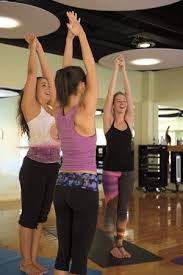Improve Thinking in Adolescents with Yoga Practice
By John M. de Castro, Ph.D.
“Yoga is like music. The rhythm of the body, the melody of the mind, and the harmony of the soul creates the symphony of life.” B.K.S. Iyengar
Yoga practice has been shown to have a large number of beneficial effects on the psychological, emotional, and physical health of the individual and is helpful in the treatment of mental and physical illness. The acceptance of yoga practice has spread from the home and yoga studios to its application with children in schools. Studies of these school programs have found that yoga practice produces a wide variety of positive emotional, psychosocial, and physical benefits.
Teachers also note improvements in their students following yoga practice. These include improved classroom behavior, social–emotional, and cognitive skills. In addition, school records, academic tests, and physiological measures have shown that yoga practice produces improvements in student grades and academic performance.
To better understand the effects of yoga practice on adolescents it is important to take into consideration that yoga is a not only a mindfulness practice, but it is also a physical exercise. It is important to compare yoga practice in schools to other forms of physical exercise to determine if yoga produces its benefits because of improved mindfulness or because of the physical exercise provided.
In today’s Research News article “.” (See summary below or view the full text of the study at: https://www.ncbi.nlm.nih.gov/pmc/articles/PMC6521753/), Vhavle and colleagues recruited adolescents and randomly assigned them to participate in school in 1-hour daily practice for 2 months of either yoga or physical exercise. They were measured before and after training for executive function, cognition, attention, visual scanning, and memory with a numerical and an alphabetical trail making test.
All participants had fast times in completing the trail making tests indicating high levels of ability. The researchers found that both groups took significantly longer after training than before for the numerical trail making test. Only the yoga group took a significantly shorter time to complete the alphabetical trail making test after training than before and this was significantly different from the exercise group.
The numerical trail making test emphasizes visual scanning and cognitive function. The scores were very fast and so all of the students were very adept at this test. Hence, there may have been a ceiling effects making it impossible to detect further improvements. On the other hand, the alphabetical trail making test measures executive function, attention, and working memory and yoga practice produced significant improvement s in performance. These results then, suggests that school-based yoga practice may enhance adolescents’ thinking skills better than physical exercise. This suggests that the mindfulness component and not the exercise component of yoga practice is the most important aspect of the practice for the improvement of thinking ability in the youths.
So, improve thinking in adolescents with yoga practice.
“Studies also show that exercise facilitates children’s executive function (i.e., processes required to select, organize, and properly initiate goal-directed actions) by increasing activation in the prefrontal cortex and serotonergic system. By integrating physical movement with breathing exercises and mindful awareness, yoga serves as a promising form of physical and cognitive training to enhance learning-related outcomes.” – Yoga4Classrooms
CMCS – Center for Mindfulness and Contemplative Studies
This and other Contemplative Studies posts are also available on Google+ https://plus.google.com/106784388191201299496/posts and on Twitter @MindfulResearch
Study Summary
Vhavle, S. P., Rao, R. M., & Manjunath, N. K. (2019). Comparison of Yoga versus Physical Exercise on Executive Function, Attention, and Working Memory in Adolescent Schoolchildren: A Randomized Controlled Trial. International journal of yoga, 12(2), 172–173. doi:10.4103/ijoy.IJOY_61_18
Abstract
Purpose:
Executive function, attention, and memory are an important indicator of cognitive health in children. In this study, we analyze the effect of yoga and physical exercise on executive functioning, attention, and memory.
Methods:
In this prospective two-armed randomized controlled trial, around 802 students from ten schools across four districts were randomized to receive daily 1 h yoga training (n = 411) or physical exercise (n = 391) for 2 months. Executive function, attention, and memory were studied using Trail Making Test (TMT). Yoga (n = 377) and physical exercise (n = 371) students contributed data to the analyses. The data were analyzed using intention-to-treat approach using Student’s t-test.
Results:
There was a significant increase in numerical TMT (TMTN) values within yoga (t = −2.17; P < 0.03) and physical activity (PA) (t = −3.37; P < 0.001) groups following interventional period. However, there was no significant change in TMTN between yoga and PA groups (t = 0.44; P = 0.66). There was a significant increase in alphabetical TMT (TMTA) values within yoga (t = 6.21; P < 0.00) and PA groups (t = 1.19; P < 0.234) following interventional period. However, there was no significant change in TMTA between yoga and PA groups (t = 3.46; P = 0.001).
Conclusion:
The results suggest that yoga improves executive function, attention, and working memory as effectively as physical exercise intervention in adolescent schoolchildren.
https://www.ncbi.nlm.nih.gov/pmc/articles/PMC6521753/
